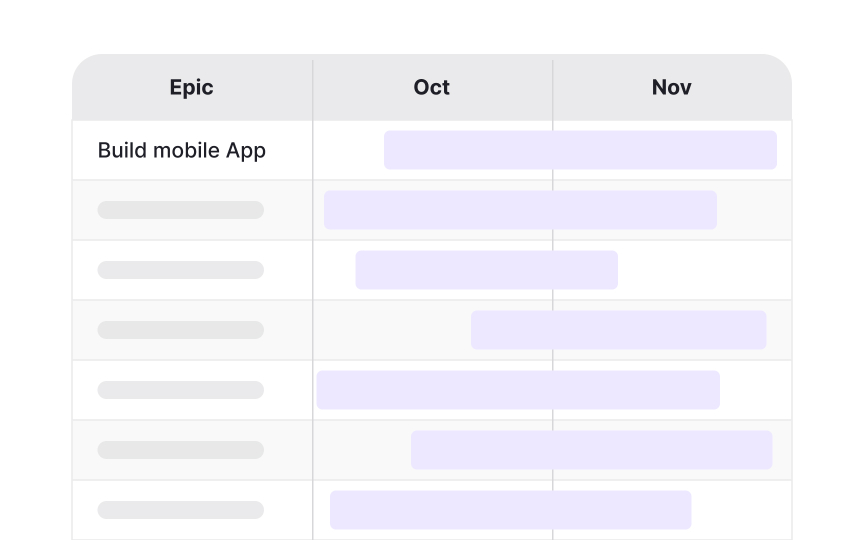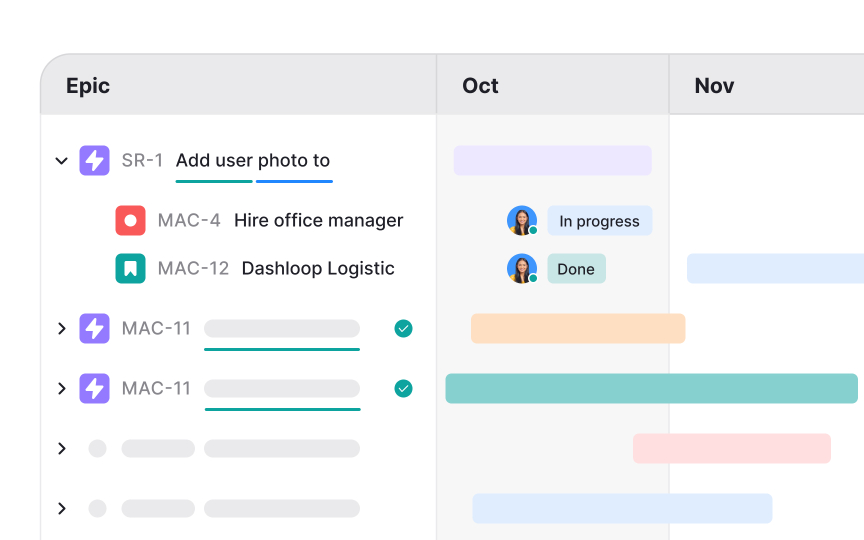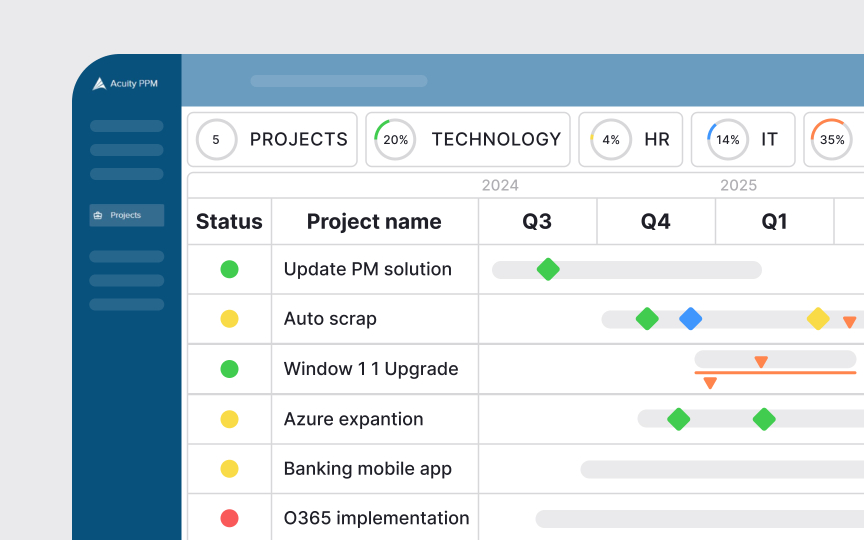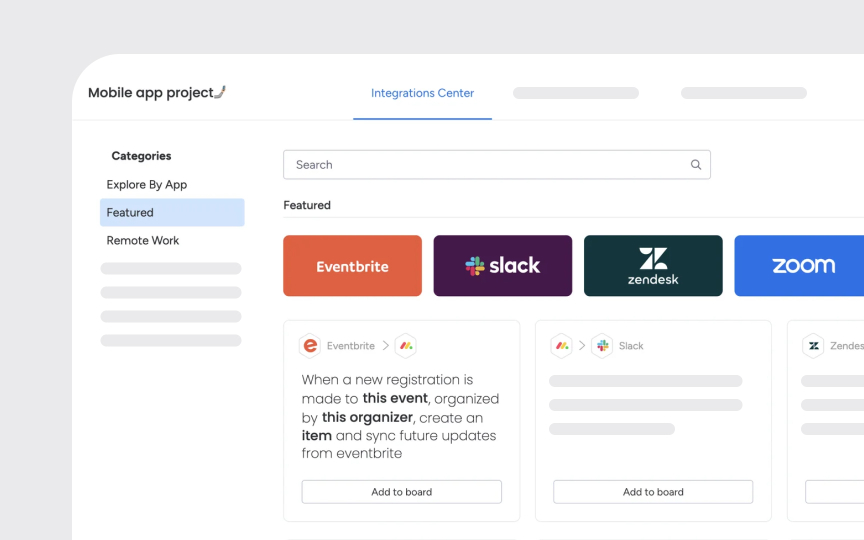The Roadmapping Tools
Select and apply the right roadmapping tools to align strategy with team workflows.
Roadmapping tools turn abstract plans into visual structures that teams can share, adjust, and act upon. They provide a common space where strategy, milestones, and tasks become visible to everyone. Yet tools differ widely: some emphasize agile execution, others excel at stakeholder communication, while portfolio-oriented tools highlight multiple products or projects in one view to track dependencies and align efforts across the organization.
Understanding these differences is only part of the work. The harder question is how to decide which tool is right for your context. A small startup may value speed and integrations, while a large enterprise might prioritize scalability, permissions, and security. Factors such as ease of use, collaboration features, and data protection shape whether a tool becomes an asset or a burden.
By looking at tool categories and reflecting on evaluation criteria, teams can create a framework for decision-making. The goal is not to chase the tool with the longest feature list but to choose one that matches the team’s needs, supports the product vision, and adapts to change.
Some teams still rely on spreadsheets or slide decks stored on individual computers to manage product plans. While these formats can capture information quickly, they are outdated for today’s collaborative work. Static files are hard to maintain, disconnected from ongoing tasks, and difficult to share across teams. This often results in misalignment, with different versions of the same roadmap circulating and no clear record of decisions.[1]
Dedicated roadmapping tools address these challenges by offering living documents that evolve with the product. They combine visualization, collaboration, and integration, allowing updates in real time and ensuring that all stakeholders see the same plan. This makes it easier to adjust priorities, communicate strategy securely, and maintain alignment across teams. Moving away from offline spreadsheets and slide decks is therefore less about abandoning a habit and more about adopting a more effective way to plan and share strategy.
Despite the variety of tools on the market, certain functions are common and essential. A reliable tool should allow teams to create timelines, visualize milestones, and show dependencies between tasks. These features make it easier to understand how initiatives connect and when critical steps need to be completed.
Beyond visualization, collaboration is a core expectation. Tools should enable multiple contributors to comment, update, and refine the roadmap, ensuring that knowledge is not lost and that decisions are transparent. Integrations with systems like Jira, Slack, or Google Workspace extend this collaboration, helping teams avoid duplicate work by keeping data connected across platforms.
Reporting is another critical function. Teams benefit from progress tracking and analytics that reveal whether work is advancing as planned and highlight potential risks. These insights turn a roadmap from a static chart into a decision-making tool that guides both short-term adjustments and long-term strategy.[2]
Agile-focused tools support teams that work in short cycles and need to adjust plans quickly. They often include Kanban boards, sprint planning features, and backlog management.
What sets these tools apart is their ability to connect high-level roadmaps with everyday execution. By integrating with development platforms and communication apps, they ensure updates are reflected where teams actually work. This creates a balance between long-term vision and rapid delivery, allowing teams to maintain strategic direction while adapting to change.[3]
Pro Tip: Agile-focused tools work best when your team needs roadmaps closely tied to sprints and iterative planning.
Visualization-focused tools aim to present roadmaps in a way that is clear and persuasive for stakeholders. Platforms like ProductPlan and Office Timeline provide customizable templates, color coding, and drag-and-drop features to show milestones, dependencies, and progress bars at a glance. Miro, with its infinite whiteboard and voting tools, supports collaborative visualization that can turn complex plans into intuitive visuals.[4]
These tools are often used for executive updates, customer-facing roadmaps, or cross-functional presentations. Their strength lies in tailoring the level of detail to different audiences. By adjusting views and adding contextual notes, teams can communicate not just what is on the roadmap but also why it matters. This builds trust and helps secure alignment around priorities.
Pro Tip: Use visualization-focused tools to translate complex plans into a story that resonates with executives, partners, or customers.
Portfolio-oriented tools help teams oversee several products, projects, or
These tools are particularly useful in large organizations where parallel efforts need to stay coordinated. By showing multiple roadmaps together, they allow leaders to spot conflicts, balance workloads, and evaluate whether projects contribute to overall strategy. For teams managing just one product, such capabilities may be excessive, but for enterprises, they become essential for keeping complexity under control.
Pro Tip: Portfolio tools are best suited when several teams or products need to be coordinated under shared goals.
Collaboration features are central to roadmapping tools because they turn the roadmap into a shared space rather than a static
Strong collaboration functions also reduce the risk of knowledge gaps. With features like real-time updates, notifications, and shared templates, tools support ongoing communication across departments. This is especially valuable when teams are distributed, as asynchronous features such as Loom or Miro boards allow people to contribute ideas without being in the same room. In this way, roadmaps become living documents that strengthen both coordination and accountability.
Pro Tip: Prioritize collaboration features if your team depends on transparent updates and cross-functional knowledge sharing.
One of the strongest differentiators between roadmapping tools is how well they integrate with the systems teams already use. Tools like Monday.com and Wrike connect with Slack, Google Workspace, and GitHub, while Zoho Sprints and
For teams with established toolchains, integrations can be the deciding factor. A roadmap that syncs with project management, communication, and analytics tools reduces context switching and increases efficiency. On the other hand, a poor fit can isolate the roadmap from daily work, making it harder for teams to keep plans updated. This is why evaluating integration options early is essential in the selection process.
A roadmapping tool must be easy to adopt while flexible enough to adapt to team needs. Tools like Miro and ProductPlan emphasize intuitive drag-and-drop interfaces and customizable templates, making them approachable for teams without steep learning curves. At the same time, platforms such as Aha! or Acuity PPM provide more advanced configuration options that let enterprises tailor the tool to complex workflows.
Security is equally important, since roadmaps often contain sensitive business information. Best practices include role-based
Selecting a roadmapping tool is less about checking long feature lists and more about asking targeted questions. The right questions help teams uncover whether a tool fits their context, workflow, and long-term strategy. They also ensure that both day-to-day contributors and decision-makers get the support they need.
Some of the most practical questions include:
- What do we need to communicate, and who are the primary audiences for the roadmap?
- How easy will it be to update and maintain the roadmap over time?
- Does the tool integrate smoothly with our existing systems, such as
project management or communication platforms? - How secure is the tool, and can access be managed appropriately for different roles?
- Does it provide the right balance between
usability , customization, and reporting capabilities? - Will the tool scale with our team and product as they grow in complexity?
- Does the pricing structure align with our budget and the value it provides?
By addressing these questions early, teams avoid chasing popular names or long feature sets and instead focus on finding a tool that supports their actual needs.
Even the most capable tool will fail if the team does not use it consistently. Alignment begins with involving stakeholders early and clarifying how different groups will benefit from the roadmap. For instance, executives may need high-level portfolio views, while delivery teams rely on agile boards or release timelines. Choosing a tool that can provide multiple perspectives helps satisfy these varied needs and builds trust across the organization.
Introducing a new tool also requires deliberate change management. Start by setting clear expectations for why the shift is happening and what problems it will solve. Migrate existing data gradually to avoid disruption, and provide hands-on training sessions so team members can practice within real scenarios. Assigning tool “champions” or early adopters within each department can accelerate adoption, as peers often learn best from colleagues. Regular check-ins in the first weeks help surface challenges and reinforce consistent use.
Adoption should not be treated as a one-time event. To keep momentum, ensure the roadmap is regularly updated and used in recurring meetings, such as sprint reviews or strategy check-ins. When teams see the tool actively shaping decisions, they are more likely to rely on it as the single source of truth.
References
- How to Evaluate Top Roadmapping Solutions | ProductPlan
- 28 Best Project Roadmap Software For Project Strategy In 2025 | The Digital Project Manager
Topics
From Course
Images provided by
Share
Similar lessons

Roadmaps and Prioritization

Why You Need a Roadmap























